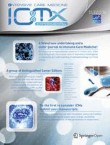Acute brain injuries, such as traumatic brain injury and ischemic and hemorragic stroke, are a leading cause of death and disability worldwide. While characterized by clearly distict primary events—vascular da...
Authors:
Chiara Robba, Elisa R. Zanier, Carmen Lopez Soto, Soojin Park, Romain Sonneville, Raimund Helbolk, Aarti Sarwal, Virginia F. J. Newcombe, Mathieu van der Jagt, Jan Gunst, Tobias Gauss, Samy Figueiredo, Jacques Duranteau, Markus B. Skrifvars, Carolina Iaquaniello, Susanne Muehlschlegel…
Citation:
Intensive Care Medicine Experimental
2024
12:1
Content type: Research Articles
Published on: 5 January 2024




